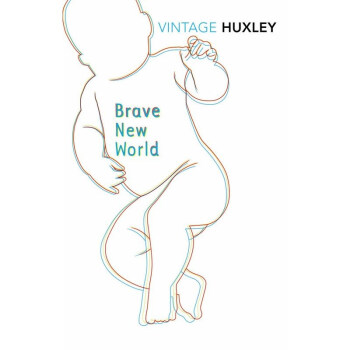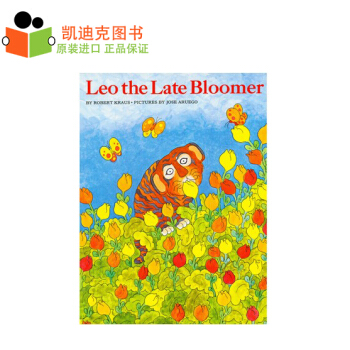![Lon Po Po: A Red-Riding Hood Story from China[狼婆婆] [平装] [4岁及以上]](https://pic.tinynews.org/19039006/8acbad15-ae84-4b28-83da-f52b47abee78.jpg)

具体描述
内容简介
This "gripping variation of Red Riding Hood . . . is an outstanding achievement that will be pored over again and again" (School Library Journal, starred review). "The illustrations seem to throb with the mystery and terror of the wolf."--The Horn Book, starred review. Winner of the 1990 Randolph Caldecott Medal. Full color.作者简介
Ed Young was born on November 28, 1931 in Tianjin, China. When he was three years old, he and his family moved to Shanghai. His mother would ring a bell at mealtimes, and he would slide down the banister with his brothers and sisters. “I have never lost the child in me. My father would spin endless tales of his own to entertain our imaginations on summer nights lying on the flat roof of our house. I have never forgotten the images I saw in my mind.” From an early age, Ed loved to create stories and draw pictures and thought he could "disappear" into his own world, brought to life through his illustrations.In 1951, Young came to America to study architecture. Instead, he grew more interested in art, and soon switched his major. Young’s first job was with a New York advertising agency where he spent his lunch breaks sketching animals at Central Park Zoo. During that time, he received a letter from his father which said, “A successful life and a happy life is one measured by how much you have accomplished for others and not one measured by how much you have done for yourself. “Young said, “I understood then that to realize my potential as an artist was subservient to my worth as a human being. To be truly successful, I needed to find a place where my work would also inspire others to fuller and happier lives. I wished to share with everyone my father’s words about success – work can, in fact, be the rooftop from which we launch ourselves to higher places.” In search of something more expansive, expressive, and timeless, Young discovered all this, and more, in children’s books.
精彩书评
"With forceful impressionistic paintings, Young artfully entices readers across the fairy-tale threshold into a story of three girls' fearless battle of wits with a famished wolf."-- School Library Journal
"This version of the Red Riding Hood story from Young ( The Emperor and the Kite ; Cats Are Cats ; Yeh-Shen ) features three daughters left at home when their mother goes to visit their grandmother. Lon Po Po, the Granny Wolf, pretends to be the girls' grandmother, until clever Shang, the eldest daughter, suspects the greedy wolf's real identity. Tempting him with ginkgo nuts, the girls pull him in a basket to the top of the tree in which they are hiding, then let go of the rope--killing him. One of Young's most arresting illustrations accompanies his dedication: ``To all the wolves of the world for lending their good name as a tangible symbol for our darkness.'' Like ancient Oriental paintings, the illustrations are frequently grouped in panels. When the girls meet the wolf, e.g., the left panel focuses on their wary faces peering out from the darkness, the middle enlarges the evil wolf's eye and teeth, and the third is a vivid swirl of the blue clothes in which the wolf is disguised. The juxtaposition of abstract and realistic representations, the complicated play of color and shadow, and the depth of the artist's vision all help transform this simple fairy tale into an extraordinary and powerful book."
-- Publishers Weekly
前言/序言
用户评价
这本书的插画简直是视觉的盛宴!色彩的运用大胆而富有层次感,每一个场景都仿佛被施了魔法。我特别喜欢作者如何用光影来烘托气氛,尤其是夜晚的森林部分,那种幽暗中透出的神秘感,让人忍不住想一探究竟。人物的描绘也非常生动,那种夸张却不失可爱的表情,把角色的情绪刻画得淋漓尽致。我家的小家伙每次翻到特定的一页,都会咯咯地笑出声来,可见这些画面有多么吸引人。即便是成年人翻阅,也会被这种充满东方韵味的艺术风格所打动。它不仅仅是故事的载体,更是一件值得收藏的艺术品,让人愿意反复品味每一个细节,体会创作者的匠心独运。这种高质量的图画书,对培养孩子的审美眼光是极好的启蒙。
评分故事情节的推进节奏把握得恰到好处,它巧妙地糅合了我们耳熟能详的经典童话元素,却又加入了令人耳目一新的东方视角和处理方式。紧张与诙谐的平衡点拿捏得非常精妙,在需要营造悬念的时候,文字的留白处理得极其到位,让人心头一紧,期待着下一步的转折。而一旦危机解除,那种松弛感又来得自然流畅,绝不会让人觉得突兀。特别是角色之间的互动,那种基于文化背景产生的微妙差异,让整个叙事充满了趣味性和深度。我发现,即便是第一次接触这个故事的小朋友,也能很快地跟上情节的发展,因为作者的叙事语言是如此的精准和富有画面感,像是在耳边娓娓道来一个古老的传说,引人入胜,让人完全沉浸其中,无法自拔。
评分这本书在主题的探讨上,展现出了超越一般儿童读物的深度。它不仅仅停留在“好人与坏人”的简单二元对立上,而是 subtly 地引导孩子去思考“机智”和“勇气”的真正含义。故事中对于智慧的赞美,是通过角色的实际行动而非空洞的说教来体现的,这才是真正能触动孩子内心深处的教育方式。我尤其欣赏结尾的处理,它没有用那种过于简单粗暴的结局来做总结,而是留下了一丝回味的空间,让家长和孩子在读完之后,还能就其中的某些选择和智慧进行一番有意义的讨论。这种开放式的结局,极大地激发了孩子独立思考的能力,让他们明白解决问题的方法有很多种,而头脑的灵活比蛮力更重要。
评分最让我感动的是这本书所传递出来的那种温馨而又坚韧的情感内核。它成功地在紧张刺激的冒险故事中,植入了一种潜移默化的家庭支持和社区互助的力量感。虽然主角需要独自面对困境,但我们能从字里行间感受到那种无形的支持网络在默默发挥作用。对于年幼的孩子来说,这种关于“爱与保护”的表达方式是如此的细腻和真诚,它告诉孩子们,即使世界很大很复杂,也总有温暖的力量在守护着他们。这种正向的情感灌输,对建立孩子的安全感和乐观心态具有不可替代的作用。读完之后,孩子的心里会留下一种甜美的回味,而不是单纯的恐惧感,这才是优秀童书的最高境界。
评分从装帧和印刷质量来看,这本书绝对是物超所值。纸张的质感非常厚实,拿在手里沉甸甸的,有一种高档感,这对于经常被小手翻阅的绘本来说至关重要,完全不用担心轻易被撕坏。油墨的色彩饱和度很高,即使是深色调的画面,细节也依然清晰可见,这充分保证了插画的艺术效果能够完美呈现。装订线的设计也很用心,可以平整地摊开,方便孩子阅读跨页的宏大场景,不会因为书脊的阻碍而错过任何精彩的画面。每一次打开它,都能感受到制作者对细节的极致追求,这不仅仅是一本书,更像是精心制作的工艺品,放在书架上都显得格外亮眼。
评分读书更是一种追求,我有一个朋友,虽然比我大但是80后的,我第一到他家里去的时候被深深地震撼了,为什么,因为他书房里居然有两千多本藏书,我当时很不解,他说这是一种追求。“读书可以让人在现实中构筑自己的“精神家园”,让自己在花繁柳密中拨的开,在风狂雨急时立得定。我想这是每个人都渴望达到的人生境界,追求生命的定力、灵魂的安顿和心灵的纯净,以远离孤独与困惑。 读书月”活动开展后,我反复思考着读书的意义,因为我知道,读书不是一天两天的事,只有从思想上认识到读书的重要性,启动内生动力,才能够坚定信念,将读书的习惯继续到底。一个月的时间可以让我们好好去读一本书,一本好书可以给我们人生带来很大的指导,但我们的人生需要大量的书来指导。我想,我们举办“读书月”活动、举行了这次演讲赛。目的就是要让我们深刻理解读书的意义,唤起我们对书本的渴望,激发我们读书的热情,养成读书的习惯。让我们彻底的明白:只有以书为友,才能让自己的生活更加充实、让自己的人生更加辉煌
评分"好仁不好学,其蔽也愚;好知不好学,其蔽也荡;好信不好学,其蔽也贼;好直不好学,其蔽也绞;好勇不好学,其蔽也乱;好刚不好学,其蔽也狂。"(论语·阳货)
评分读完这本书,给人一种拨云见日、豁然开朗的感觉,尤其对照自己的亲身经历,我发觉很多现实的困惑在书中有所体现,也在书中的“金言”的指引下走出困惑。这本书给我最大的感受就是尊重他人的自重感,这也是本书的中心,是本书最可爱的地方。 什么是自重感呢?自重感就是一种接受自己并喜欢自己的感觉,是一种对自己的认可和热爱。简单的说就是觉得自己很重要的感觉。 任何人都十分看重自己的自重感,渴求他人接受自己、认可自己、肯定自己、重视和尊重自己。与其说自重感是人的虚伪,不如说它是尊严和自尊。自重感就像喜怒哀乐一样,是一个健全的人与生俱来的,甚至可以说是人的一种本能。失去自重感的人,只有人的身躯,一具行尸走肉。所以人们总是竭力保护自己的自重感,我们也要尊重他人的自重感。那我们怎样做到尊重他人的自重感呢? 一、赞赏是一种伟大的神力 卡耐基说:“伤害别人不仅不能改变他们,更不能鼓舞他们。”如果你想试图改变一个人,不妨赞赏他、鼓励他。赞赏,可以打开彼此的心扉;赞赏,可以消除彼此间的隔膜;赞赏,可以逾越世上最遥远的距离。 可是,我们常常吝啬对别人的赞赏。参加演讲听讲,还没结束就等的不耐烦了,还没等主持人说结束就已经走了一半,剩下的一半也正拥挤着往外走,掌声稀稀落落。不知道该为演讲者难过还是为观众难过,其实演讲者所要求的,不过是一点赞赏的掌声,让他们感觉自己得到了别人的认可,让他们知道自己的辛苦没有白费,可是仅仅这一点点的要求都得不到满足。 赞赏别人不同于无原则的阿谀奉承,别把赞美和拍马屁混为一谈,拍马屁是肤浅、虚伪的;而赞赏是出于对人的真情,是对别人真诚的肯定。这世界并不缺少美,只是缺少发现,缺少赞赏。每个人都希望得到别人的赞赏,得到自重感,你也需要,我亦如此。所以,我们要学会赞赏他人。 二、微笑是一种万能剂 卡耐基说,行为胜于言论,对人微笑就是向他人表明,“我喜欢你,你使我快乐,我喜欢见你。”在和朋友的交往中,我们的脸上应该时刻挂着的微笑。 “一笑泯恩仇”,微笑有时候还可以减弱甚至消除是是非非、恩恩怨怨。 只有心里有阳光的人,才能感受到现实的阳光,才能把阳光分享给他人。生活始终是一面镜子,照到的是我们的影像,当我们哭泣时,生活在哭泣,当我们微笑时,生活也在微笑。赞赏别人不同于无原则的阿谀奉承,别把赞美和拍马屁混为一谈,拍马屁是肤浅、虚伪的;而赞赏是出于对人的真情,是对别人真诚的肯定。这世界并不缺少美,只是缺少发现,缺少赞赏。
评分读是愉悦更是困顿为了不再困顿
评分不错,细节很好,画风很细腻。
评分百本必读,一直想收的一本有中国特色的绘本
评分读是愉悦更是困顿为了不再困顿
评分盖西伯拘而演《周易?》;仲尼厄而作《春秋》;屈原放逐,乃赋《离骚》;左丘失明,厥有《国语》;孙子膑脚,《兵法》修列;不韦迁蜀,世传《吕览》;韩非囚秦,《说难》《孤愤》。《诗》三百篇,大氐贤圣发愤之所为作也。此人皆意有所郁结,不得通其道,故述往事,思来者。
评分不错,细节很好,画风很细腻。
相关图书
本站所有内容均为互联网搜索引擎提供的公开搜索信息,本站不存储任何数据与内容,任何内容与数据均与本站无关,如有需要请联系相关搜索引擎包括但不限于百度,google,bing,sogou 等
© 2025 book.idnshop.cc All Rights Reserved. 静思书屋 版权所有

![Managing up[管理者:如何与上司打交道] 英文原版 [平装] pdf epub mobi 电子书 下载](https://pic.tinynews.org/19041430/8714685b-16fc-4df4-a8a4-a7f2209906d0.jpg)
![Hard Times 艰难时世 [平装] pdf epub mobi 电子书 下载](https://pic.tinynews.org/19043408/rBEhWlKis4YIAAAAABEmEGDOkaIAAGdrgDzTqUAESYo587.jpg)
![The American 美国人 英文原版 [平装] pdf epub mobi 电子书 下载](https://pic.tinynews.org/19043462/rBEhWFJ6HY8IAAAAAACwo80gFgYAAFFYQLbTVgAALC7957.jpg)
![HR from the Outside In: Six Competencies for the Future of Human Resources [精装] [未来HR的六项修炼] pdf epub mobi 电子书 下载](https://pic.tinynews.org/19275163/rBEHZ1BQVDkIAAAAAABMwaZWweIAABJzQG28gQAAEzZ748.jpg)
![What Was the Gold Rush? 英文原版 [平装] [8-12岁] pdf epub mobi 电子书 下载](https://pic.tinynews.org/19278746/rBEQWFE1lMcIAAAAAAC716UVhQIAABf6gBnSOAAALvv091.jpg)
![Amelia Bedelia, Cub Reporter (I Can Read, Level 2) [平装] [4-8岁] pdf epub mobi 电子书 下载](https://pic.tinynews.org/19285533/550bf4f8N0c6dd76b.jpg)
![Batman: Battle for the Cowl [平装] pdf epub mobi 电子书 下载](https://pic.tinynews.org/19352652/rBEhVFJbm44IAAAAAADtO1GU4LcAAEHYwFpcX4AAO1T439.jpg)
![Knuffle Bunny Free: An Unexpected Diversion [平装] pdf epub mobi 电子书 下载](https://pic.tinynews.org/19455619/rBEhVFKlnZUIAAAAAAH_rpJBoUoAAGkmgAxFxcAAf_G722.jpg)
![My Bus 我的巴士 [精装] [4-8岁] pdf epub mobi 电子书 下载](https://pic.tinynews.org/19472823/53e067d7N84e2c457.jpg)
![Holiday Activity Tin [Cards] Usborne英文原版 [精装] pdf epub mobi 电子书 下载](https://pic.tinynews.org/19476652/rBEQWFNfBjUIAAAAAAEFcIqTdncAAFuzACjJ4gAAQWI557.jpg)
![Hyperion [Mass Market Paperbound] 英文原版 [Mass Market Paperbound] pdf epub mobi 电子书 下载](https://pic.tinynews.org/19480324/5469bf6dN0ec337f5.jpg)
![Ideas and Opinions 英文原版 [精装] pdf epub mobi 电子书 下载](https://pic.tinynews.org/19483667/5469d504Nd52fb204.jpg)
![A Little History Of Science [平装] [科学小史] pdf epub mobi 电子书 下载](https://pic.tinynews.org/19573341/56aae168N2603dcb2.jpg)
![DK Readers L2: LEGO Star Wars: The Force Awakens [平装] [04--08] pdf epub mobi 电子书 下载](https://pic.tinynews.org/19638180/57844ce9N0b6917a9.jpg)
![Judy Moody and Friends: Mrs. Moody in the Birthd [平装] [04--06] pdf epub mobi 电子书 下载](https://pic.tinynews.org/19740544/578760caNce1eb924.jpg)
![The BFG 斯皮尔伯格新作圆梦巨人原版图书 特别版 英文原版 [平装] [7 - 11 岁] pdf epub mobi 电子书 下载](https://pic.tinynews.org/19824476/58097024Nbc84eccb.jpg)
![Pip and Posy: The New Friend [精装] [02--05] pdf epub mobi 电子书 下载](https://pic.tinynews.org/19827308/584e44fbN0f0f3713.jpg)


